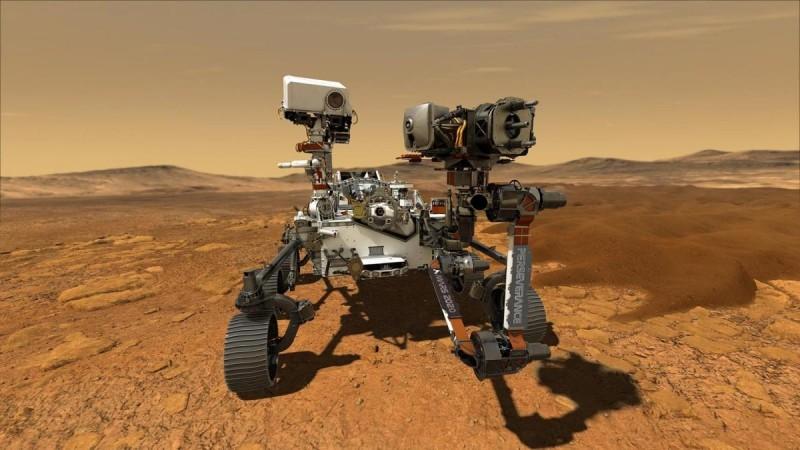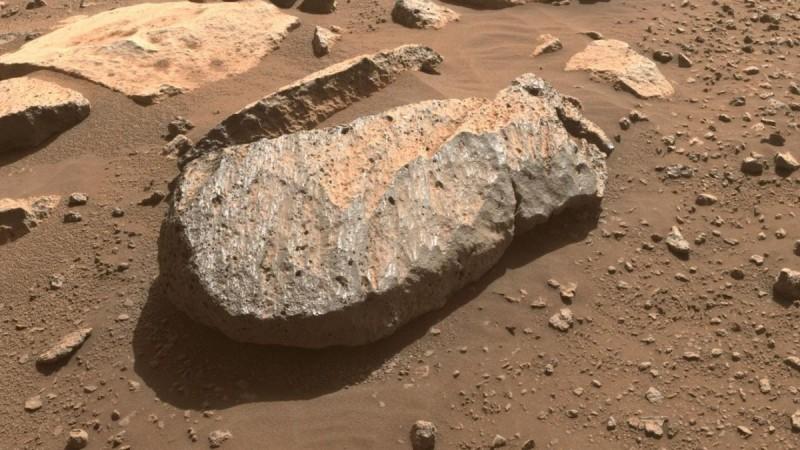After facing a setback in its maiden sampling effort on August 6, 2021, the Perseverance rover is all set to have a crack at it again this week. The rover which is a crucial part of NASA's mission to find signs of ancient microbial life on Mars will abrade a rock this week and will help scientists back home on Earth to ascertain whether it can hold out against the rover's powerful drill.
Perseverance's 7-foot (2-meter) mechanical arm consists of an array of exploratory instruments. This week, drilling tool on the arm will abrade or scrape into the surface of a rock that has been nicknamed "Rochette". This will provide researchers with snapshot into the rock's inside and help decide whether a sample can be acquired using the rover's coring bit.
The sample—which will be a little thicker than a pencil—would be stored in one of the titanium tube that the rover carries. If the team decides to obtain a core from this rock, the process of sampling will commence this week.
Fresh Sampling Attempt

Earlier this month, the rover tried to procure a sample from a rock on the Jezero Crater floor that it has been traversing for some time now. However, the rock's consistency was excessively crumbly and disintegrated into small fragments that were inadequate in size to be held within the titanium tube before it was seal and stored aboard Perseverance. Currently, 42 unused titanium tubes remain aboard the rover.
Since then the rover has trucked 1,493 feet (455 meters) to a ridge that has been nicknamed "Citadelle" (French for 'castle'). It is called so as the ragged are overlooks Jezero Crater's floor. A layer of rock that appears to weather wind erosion caps the ridge. This suggests that it can hold up to the drilling process.
"There are potentially older rocks in the 'South Séítah' region ahead of us, so having this younger sample can help us reconstruct the whole timeline of Jezero," said Vivian Sun, a mission scientist at NASA's Jet Propulsion Laboratory (JPL), in a statement. JPL, which built Perseverance, manages the rover's operations.
Using the 'Vantage Point'

An extra step has been added to the sample collection process in the latest attempt. Once the Perseverance looks inside the sample tube using its Mastcam-Z camera system, the sampling sequence will be paused. This will help the team evaluate the image in order to ensure that a rock core is present. Upon the confirmation of a sample, the rover will be directed to seal the tube.
Despite the drilled rock not being capture in the first sampling attempt, the sample tube still holds a sample of the red planet's atmosphere. "By returning samples to Earth, we hope to answer a number of scientific questions, including the composition of Mars' atmosphere. That's why we're interested in an atmospheric sample along with rock samples," explained Ken Farley, Perseverance's project scientist at Caltech.
While Perseverance sits on top of Citadelle, it will employ RIMFAX—a subsurface radar—to survey layers of rock beneath it. RIMFAX stands for Radar Imager for Mars' Subsurface Experiment. Additionally, the elevation of the ridge will serve as an appropriate vantage point from where Mastcam-Z can inspect the area for others rocks that may be potential sampling targets.








